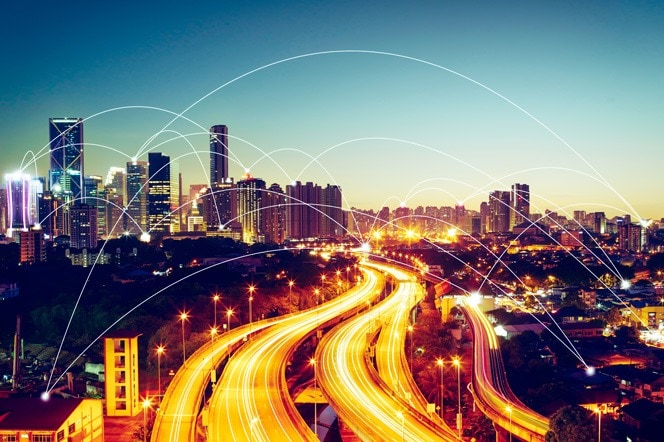The evolution of lighting has come a long way over the last decade, but what will the industry look like in years to come? We offer a holistic approach to advances in lighting design and technology.
Connectivity and IoT
Smart technology means that the tools we use are increasingly connected together, controlled and analysed as part of the Internet of Things. This connectivity will increase further as technology develops, creating a world in which everything is microscopically monitored, managed and streamlined. All home lighting systems will be controllable from a remote smart device by default for example, and smart streetlights will sense whether people are nearby, and dim down if they are not needed.

Hybrid devices and product cross-pollination
In the coming years we will see more product cross-pollination, where products with different functions are combined into one device. Indeed, these are emerging in the market already.
Typical items will include:
- Lighting with data tracking and transmitting technology for marketing and analysing.
- LED and table lamps with integrated speakers.
- Voice-controlled lighting systems used with Amazon Alexa and other virtual assistants.
Can or will the drive to become efficient and eco pave the way of new lighting trends?
As LED lighting is becoming more efficient, more people are adopting it to become more environmentally friendly and use less energy. Old SON street lighting (orange in colour) was not the most “efficient”, nor did it have great colour rendering or perception of safety. This is now rapidly being replaced with LED fixtures that are highly efficient, have better colour rendering and provide a better perception of safety due to the colour temperature being 4000-6000K.
But conversely, the switch to LED is impacting the environment in other ways. The cooler, brighter characteristics of the new LED fixtures are having a dramatic impact on the habitats of insects and animals, with knock on effects to the ecology. Thus, lighting design in the future will need to address the effects of artificial light, both on local ecology and human health.
The solution may well lie in alternative lighting technologies, such as:
- Bioluminescence – A method of creating light from living organisms. This type of lighting has a smaller environmental footprint and its natural light will reduce light pollution.
- Plasma lighting – An unexplored lighting technology which most accurately imitates natural sunlight, increasingly used in indoor agriculture.
- White lasers – Brighter and more energy efficient than LEDs, making them a great option for advancements in lighting, display systems and recently adopted by the car industry.
Greater control and customisation
Over time, we have become increasingly aware of the effects of light on human circadian rhythms, and the knock-on effect on health and wellbeing. For decades, switching a light on or off was the only control most people had over their lighting. However, as lighting technology develops in line with a greater awareness of our circadian rhythms, this is likely to change.
Circadian lighting – systems designed to alter the colour and brightness of the light throughout the day and night – will become more popular and widespread. People will be able to match their lighting specifications to their own personal needs, customising their lighting down to every detail. Shift workers and others with unusual sleep patterns may take advantage of light spectrums designed to imitate the sun’s natural light, but tailored to their particular timetables. This could also help to minimise the effects of jet lag for example.
Customisation will also be employed in outdoor lighting, to adapt to the features of its environment. It will become normal to control light output, light distribution and timing to reflect the particular needs in a specific location.
Get expert advice on your lighting design
For advice on future-proofing lighting within your retail, commercial, hospitality or public space, contact us on 01707 290010.